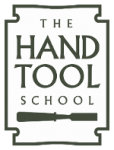Rabbet Plane 101
How the Use a Rabbet Plane
Much of this session is talking about the different types of rabbet planes you might run into. The key differences are those with a fence and those without. The Moving Fillister has a fence and depth stop and cross grain cutter while the basic rabbet plane is just a blade and wooden body. Both will have skewed aspect blades to work well across the grain and against the grain. Some straight rabbet planes can be found out there but these are best used for rabbets in starting hand stuck mouldings as the straight blade doesn't pull the plane in one direction or the other based on the skew.
Setting up a rabbet plane will vary dramatically from one type of plane to the next but the most important aspect is that the blade MUST protrude slightly past the body of the plane. Maybe 1/64" is all you need to prevent the vertical wall of the rabbet from sloping. I wouldn't aim to measure this protrusion and I usually set the blade up flush with the plane body then give it a mallet tap to bump it out a hair.
Shoulder Plane vs Rabbet Plane
Shoulder planes are designed for end grain work and not particularly long cuts. Often using a shoulder plane for a rabbet will result in a clogged plane as it isn't design for longer shavings. A shoulder plane can be pressed into service to make rabbets but you will find it much less efficient than an actual rabbet plane.



